How to Make An Authentic Native-American Arrow
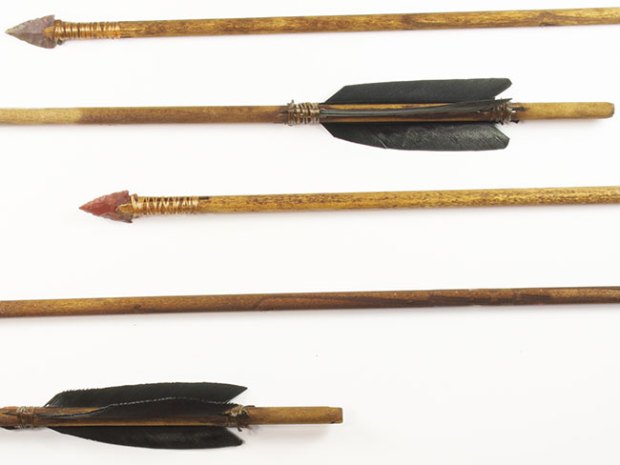
Click here for a PDF version of these instructions.
I make arrows the way my Iroquois ancestors did long ago. You can, too.
In our modern world, the hard part is getting the material, but you can use some alternatives that I’ve suggested.
Just remember: These arrows might look crude, but they’re not toys. Use them for target practice only, under the supervision of an adult, or display them in your room. Be careful!
— Gordon Soaring Hawk

WHAT YOU’LL NEED
- Adult help and/or supervision
- Quarter-inch or 5/16-inch dowels
- Bone, metal or slate, ground to shape, for arrowheads
- Stout thread or cordage to attach feathers and arrowheads to the shaft
- Hot glue, wood glue or ferrule cement
- Wing feathers from a craft store
- Water- or oil-based paint
WHAT YOU’LL DO
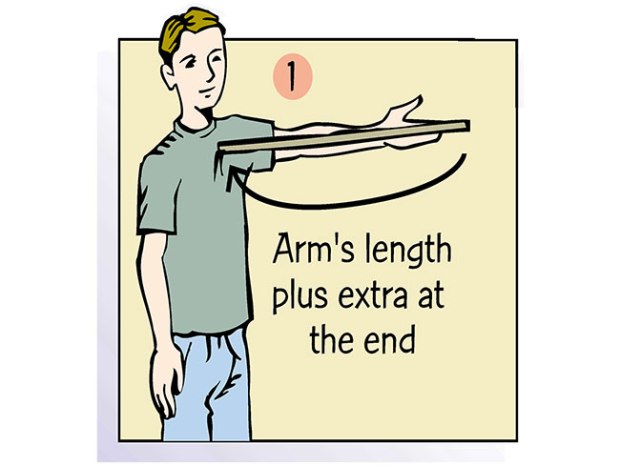
STEP 1: Shafts should be about as thick as your little finger and a couple of inches longer than the distance from your armpit to your fingertips. Make sure they’re straight as an arrow! After you gather them (get permission before cutting any growing thing), bundle them in groups of five and let dry for a few days. Dowels can be used as a substitute; they are available at lumber and building-supply stores.
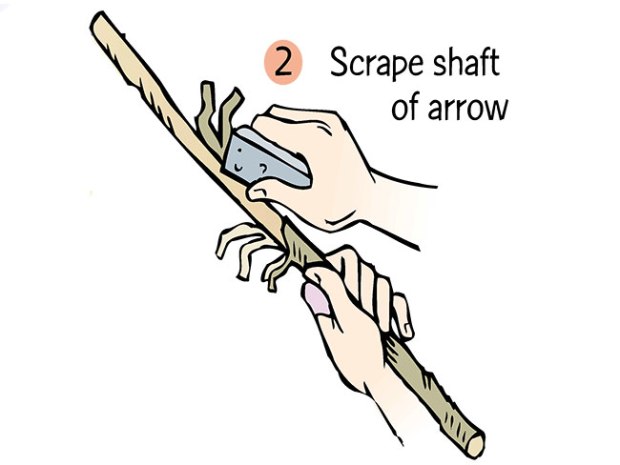
STEP 2: Once the shaft is dry, scrape off the bark until the wood is smooth.
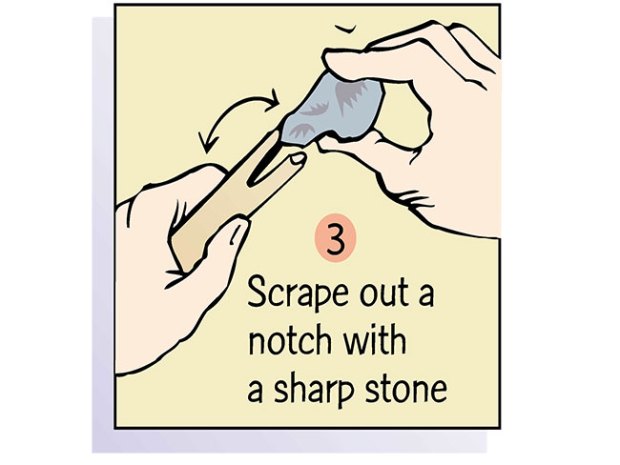
STEP 3: Cut a notch (about as deep as the diameter of the shaft) for the bowstring by scraping one end with a sharp stone. To get a sharp stone, find a piece of quartzite cobble (river stone) and break it in half with another rock. At the end of the shaft that receives the arrowhead, scrape out a notch that is 3/8 – to 5/8-inch deep. You can also use a knife, small saw or file.
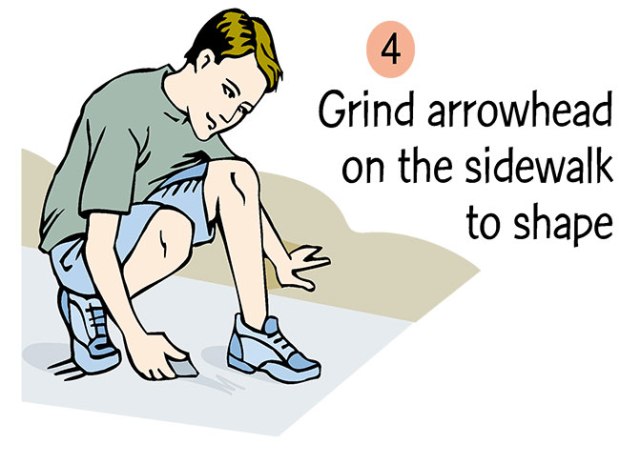
STEP 4: Grind an arrowhead into the right shape by scraping the material against a sidewalk until the arrowhead has a point and a sharp edge. It’s a simple but tedious process. For safer arrowheads, you can round off the point.
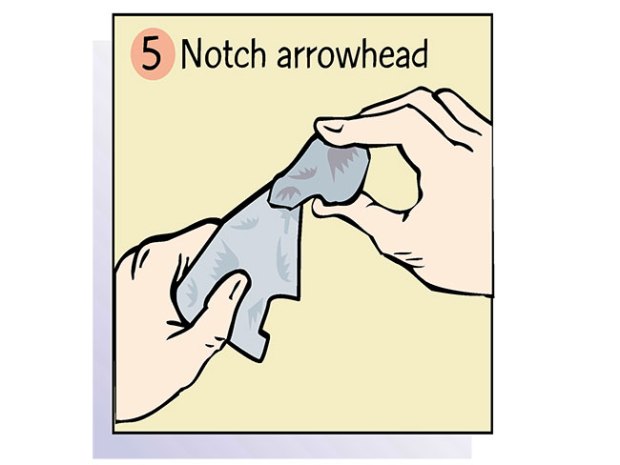
STEP 5: Using the sharp rock, gouge a notch on either side of the wide end of the arrowhead for holding the cordage.
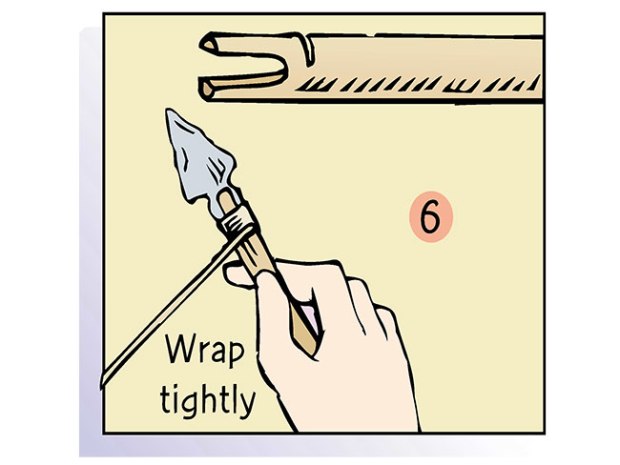
STEP 6: Place the arrowhead in the notch, wrap it with a piece of cordage 8 to 10 inches long and glue it with hot glue. I use resin, which is made from boiling pitch (sap) from trees. Making resin can be dangerous because natural turpentines must be burned off. For cordage, I use sinew, which I prepare by pounding deer tendons between rocks, then separate them into long, stringy fibers. Before I can use the sinew, I must chew it. The enzymes in saliva help dissolve the collagen that holds the tissues together, and this is what makes it work like glue. (Soaking it in water won’t work.)
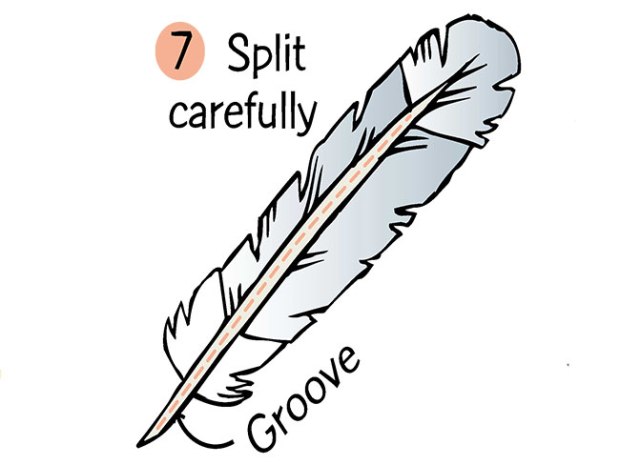
STEP 7: For fletching (arranging) the feathers on your arrows, make sure each vane comes from the same side of the wing. Split each feather down the middle of the spine (use scissors or pocketknife) and trim it to size.
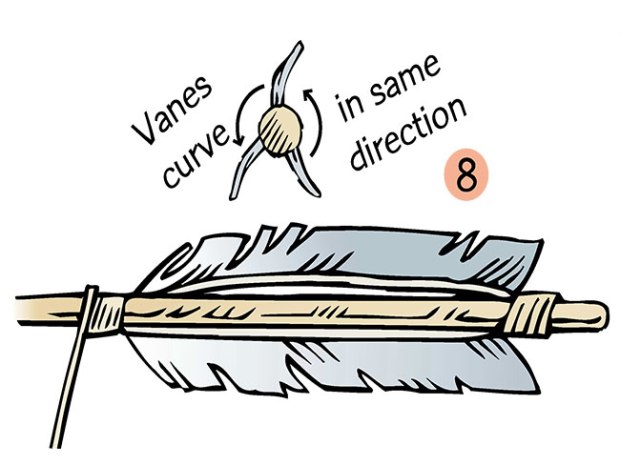
STEP 8: Glue the feathers onto the shaft, making sure the top feather is aligned with the bowstring notch, then space the two others equally from the first. Wrap more thread around each end of the feathers and set the arrow aside to dry for a day.

STEP 9: Once the wrappings are dry, the arrow is ready for painting. I put animal fat in a tin can and melt it in the sun. Then I mix in some reddish earth and daub it on the arrow with a paintbrush. You can use watercolors or oil-based paint.
Now it’s time for target practice!
awesomely cool amazing
What kind of arrow heads should i use.
do you know how to make a bow and arrow
so cool
Nothing was said about how to straighten the shaft or even what diameter to make the shaft from. This is a very “dumbed down” article compared to Ben Hunt’s material. Look him up if you don’t know him.
very cool